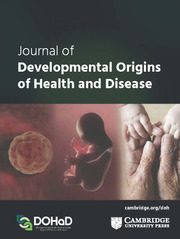No CrossRef data available.
Article contents
Preventive effects of kefir on colon tumor development in Wistar rats: gut microbiota critical role
Published online by Cambridge University Press: 27 January 2025
Abstract
To clarify the effects of kefir in critical periods of development in adult diseases, we study the effects of kefir intake during early life on gut microbiota and prevention of colorectal carcinogenesis in adulthood. Lactating Wistar rats were divided into three groups: control (C), kefir lactation (KL), and kefir puberty (KP) groups. The C and KP groups received 1 mL of water/day; KL dams received kefir milk daily (108 CFU/mL) during lactation. After weaning (postnatal day 21), KP pups received kefir treatment until 60 days. At 67 days old, colorectal carcinogenesis was induced through intraperitoneal injection of 1, 2-dimethylhydrazine. The gut microbiota composition were analyzed by 16S rRNA gene sequencing and DESeq2 (differential abundance method), revealing significant differences in bacterial abundances between the kefir consumption periods. Maternal kefir intake strong anticancer power, suppressed tumors in adult offspring and reduced the relative risk of offspring tumor development. The gut microbiota in cecal samples of the KL group was enriched with Lactobacillus, Romboutsia, and Blautia. In contrast, control animals were enriched with Acinetobacter. The administration of kefir during critical periods of development, with emphasis on lactation, affected the gut microbial community structure to promote host benefits. Pearson analysis indicated positive correlation between tumor number with IL-1 levels. Therefore, the probiotic fermented food intake in early life may be effective as chemopreventive potential against colon tumor development, especially in lactation period.
- Type
- Original Article
- Information
- Copyright
- © The Author(s), 2025. Published by Cambridge University Press in association with The International Society for Developmental Origins of Health and Disease (DOHaD)



